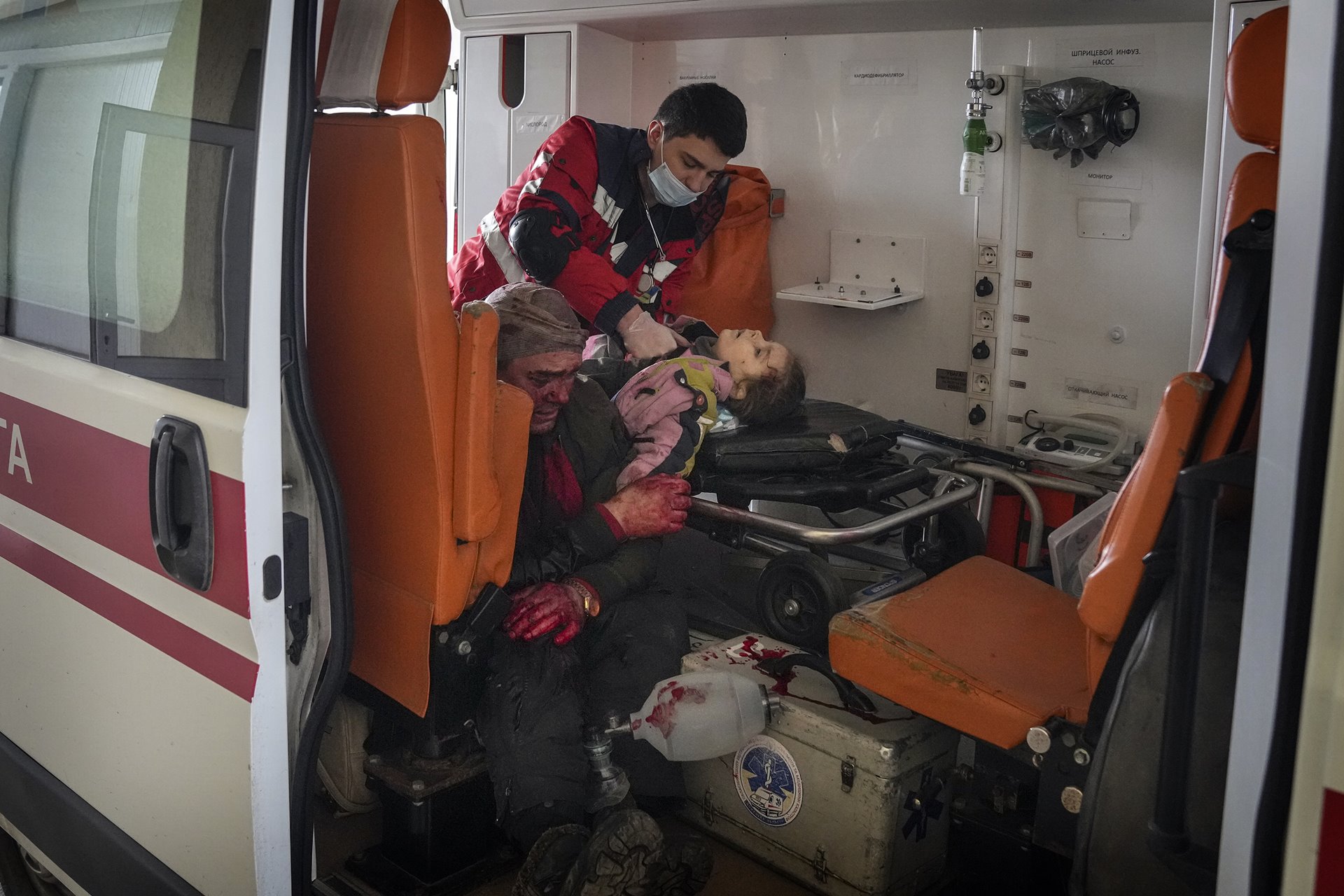Oleksandr Konovalov, an ambulance paramedic, performs CPR on Evangelina (3), injured during shelling of a residential area in Mariupol, Ukraine, as her father sits alongside. Evangelina did not survive.
The port of Mariupol on the Sea of Azov was the first city struck when Russia launched its full-scale invasion of Ukraine, on 24 February 2022. Civilians were hit hard.
The strategically important port is one of the largest Russian-speaking cities in Ukraine, a major industrial hub, and vital for the country’s steel exports. The territory was also of symbolic value to invading forces, as it represented a large step towards building a land bridge between the self-proclaimed Donetsk People’s Republic (DNR) and Crimea, which Russia had illegally annexed in 2014.
By early March, Russian forces had completely surrounded the city, restricting water, power and food supplies. Some 200,000 citizens were trapped in Mariupol, as attempts to evacuate them failed. Russian bombardment devastated the city, and included civilian targets such as a maternity hospital and a theater where people were sheltering. Evgeniy Maloletka, who is Ukrainian, was one of the very few photographers documenting events in Mariupol at that time.
On 21 April, President Vladimir Putin announced that Russian forces had taken Mariupol, but the city council said that 1,000 civilians alongside thousands of Ukrainian soldiers were holding out in the giant Azovstal steelworks. By 20 May, the soldiers defending the steelworks had surrendered, and the UN and Red Cross were able to evacuate the civilians. The UN Human Rights Office confirmed 1,348 civilian deaths during the siege of Mariupol, stating that the actual death toll was likely thousands higher; Ukraine says that figure is more than 25,000.
At the time of writing in April 2023, Mariupol remained under Russian occupation. Russia has begun rebuilding the city and scrubbing it of its Ukrainian identity by renaming streets and changing school curriculums.

